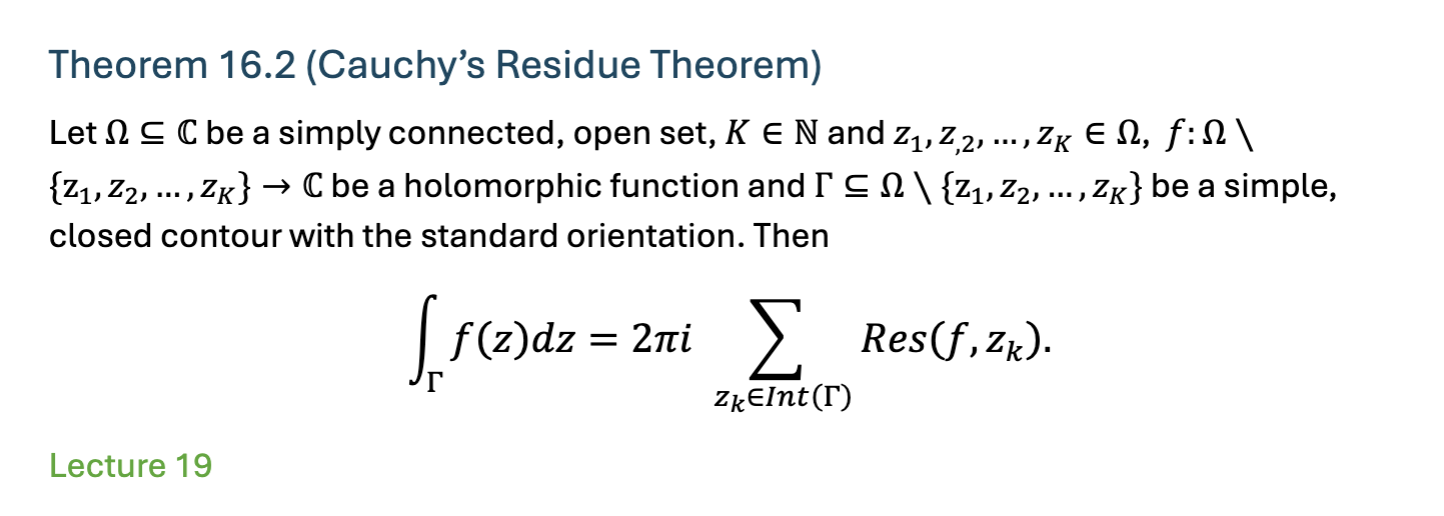RCA theorems
1/19
There's no tags or description
Looks like no tags are added yet.
Name | Mastery | Learn | Test | Matching | Spaced |
|---|
No study sessions yet.
20 Terms
algebra of open sets
union of arbitrarily many open sets is open
intersection of finitely many open sets is an open set
algebra of closed sets
union of finitely many closed sets is closed
intersection of arbitrarily many closed sets is closed
theorem 5.8
composition of continuous functions are continuous
Intermediate value theorem
f: [a,b] → R is CONT and f(a) ≠ f(b)
and λ lies between f(a) and f(b) then ∃ c in (a,b) s.t
f(c ) = λ
fixed point theorem
if f: [a ,b] → [a,b] is cont then ∃ c in [a,b] s.t
f(c ) = c
use the gx = ? - f(x) then show this equal 0 using IVT
make sure explain how g is cont on [a,b] etc
Boundedness theorem 8.3
A cont function on close bounded interval is bounded and attains its bounds
cont on [a,b] so achieves sup and inf
theorem 9.1
f: [a,b] → is cont then
f([a,b]) = [m,M]
both inf and sup are attained on [a,b]
Inverse function theorem 9.5
f: [a,b] → [c,d] is cont and strictly increasing
f(a) = c and f(b) = d
inverse f^-1 exists = continuous, strictly increasing and surjective
uniform convergence def
for each ε >0 ∃ N in Natural depending on ε NOT on x s.t
|fn(x) - f(x)| < ε when n >= N
criterion for non uniform convergence
for some ε >0 there exists a subsequence fnk of fn and a sequence of points xk st
|fnk(xk) - f(xk) | >= ε for all k in N
f is the pointwise function
theorem 10.3 cont uniform
if fn converges uniformly to f then f is a continuous function
theorem 14.1 abt diff dy/dx
f satisfies inverse function theorem and y = f(x). f is differentiable at x and f’(x) ≠ 0 then
(f^-1)’ (y) = 1/ f’(x')
15.7 rolles theorem
f is cont on [a,b] and diff on (a,b) and f(a) = f(b)
there exists c in (a,b) s.t f’(c ) = 0
16.1 mean value theorem
f is cont on [a,b] and diff on (a,b) then there is c in (a,b) s.t
f(b) - f(a)
— ——— = f’(c )
b - a
generalised mvt use for taylors
f &g are cont on [a,b]
diff on (a,b) and g’( c) ≠ 0
f(b) - f(a). f ‘ (c )
—- ——— = ———-
g(b) - g(a) g ‘ (c )
set is open if
every point of S is an interior point of S
boundary point
some on the inside some on the out
harmonic function

cauchy gorsat theorem
simple closed contour and f is holomorphic then the integral = 0
cauchys residue theorem
Let Ω ⊆ ℂ be a simply connected, open set, 𝐾 ∈ ℕ and 𝑧1, 𝑧
,2, … , 𝑧𝐾 ∈ Ω, 𝑓: Ω ∖
{z1, 𝑧2, … , 𝑧𝐾} → ℂ be a holomorphic function and Γ ⊆ Ω ∖ {z1, 𝑧2, … , 𝑧𝐾} be a simple,
closed contour with the standard orientation.
